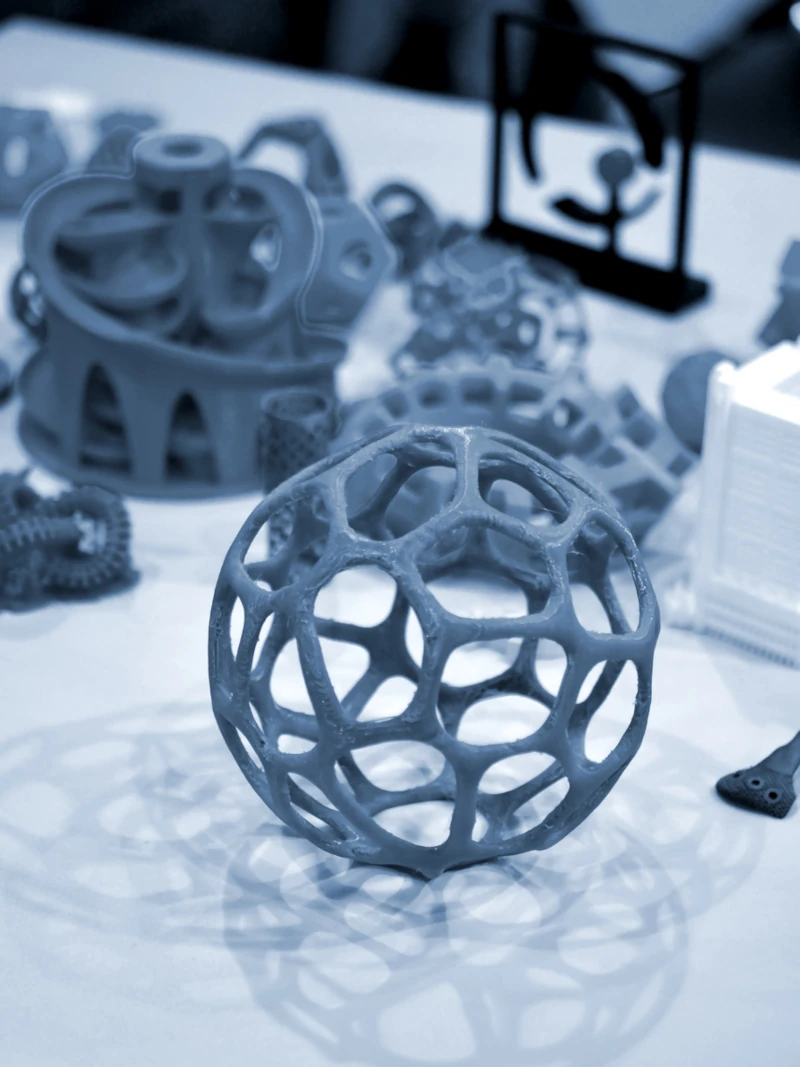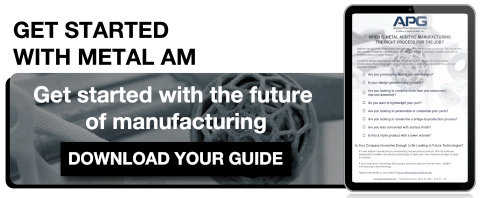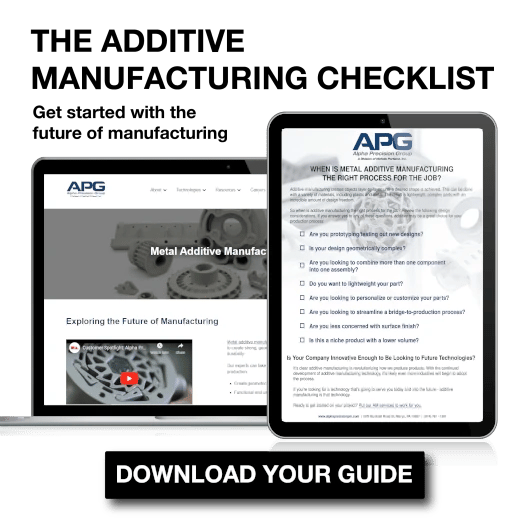
Top 10 Advantages and Disadvantages of Additive Manufacturing
Did you know that additive manufacturing (AM) has a variety of advantages over traditional manufacturing processes?
Not only does additive manufacturing give you the ability to consolidate assemblies into a single part, but you also gain freedom of design that’s unimaginable with many other manufacturing processes.
Here are 10 of the top benefits of additive manufacturing, along with some notable disadvantages.
What are the Advantages of Additive Manufacturing?
Additive manufacturing can offer your production a variety of benefits, including:
- The consolidation of assemblies into a single part
- The ability to improve existing part properties
- Creating lightweight parts and assemblies
- Unrivaled parts customization
- Rapid prototyping and iteration of parts and assemblies
- Waste reduction
- Inventory stock reduction
- Decreasing energy consumption
- Being an ideal choice for producing high or low volumes of parts
- Allowing for distributed manufacturing
1. Ability to Consolidate Assemblies Into a Single Part
In many industries, parts are assembled into larger subassemblies or modules, which are then integrated into still larger assemblies. This approach has a number of disadvantages.
First, it increases the number of potential failure points, as each assembly carries with it the risk of faulty construction or component failure. Additionally, complex assemblies can be difficult and time-consuming to fabricate, requiring skilled labor and specialized equipment. Lastly, this approach often results in high levels of scrap and waste, as individual components must be shaped and sized to fit together perfectly.
Additive manufacturing offers a solution to these problems by allowing assemblies to be consolidated into a single part. This eliminates the need for assembly altogether, potentially reducing cost and waste, while increasing efficiency.
2. Improve Existing Part Properties
Additively manufactured parts have been found to have superior mechanical properties compared to their conventionally manufactured counterparts due, in part, to the microstructural features that can be achieved with AM.
In particular, Selective Laser Melting (SLM) can be used to create fine, uniform microstructures with high aspect ratios that are not possible to achieve with conventional casting or machining processes. As a result, SLM has the potential to improve the mechanical properties of existing parts by increasing strength and ductility while reducing weight. In addition, SLM can be used to create honeycomb structures with tailored porosity that can improve the acoustic and thermal properties of parts.
3. Ability to Create Lightweight Parts
Not only does AM allow for the creation of parts with intricate designs, but it also has the ability to create parts that are lighter in weight than their traditionally manufactured counterparts. This is due to the fact that AM parts can be designed with hollow spaces and other internal structures that reduce the overall weight of the part without sacrificing strength or durability.
The benefits of lighter-weight components are vast, including reduced shipping costs, lower fuel consumption, and reduced wear and tear on machinery. In the aerospace industry, for example, every pound saved on a flight can result in significant cost savings. This is because less fuel is required to achieve the same level of thrust, and less fuel means fewer emissions.
As more industries begin to adopt additive manufacturing technology, the ability to produce lightweight parts will become increasingly important.
4. Unmatched Customization
One of the key benefits of AM is its ability to produce customized parts and products. Unlike traditional manufacturing methods, which require the use of standard molds and dies, AM can create objects with unique shapes and dimensions with minimal upfront investment.
Additive manufacturing technology can be used to create small batches of customized parts or products, making it an ideal solution for businesses that require high levels of customization.
5. Rapid Prototyping & Iteration
In the past, developing a new product could take months or even years. Alternatively, with rapid prototyping, you can create a prototype within days or weeks, getting accelerated results to designers, and enhancing the productivity of new product development.
Rapid prototyping is a process that uses additive manufacturing to create prototypes of products or parts. One advantage of rapid prototyping is that it allows companies to quickly and easily create prototypes without the need for expensive tooling or complex assembly processes. As a result, companies save both time and money when developing new products.
Rapid prototyping is an essential tool for any company that wants to stay ahead of the competition by getting new products to market quickly and efficiently.
6. Waste Reduction
One of the key advantages of AM is that it allows for the production of parts with very little waste. Unlike traditional subtractive manufacturing processes, which involve machining away excess material from a solid block, AM builds parts layer by layer from a digital model. In addition, AM allows for the direct use of recyclable materials, further reducing waste. As a result, AM has the potential to greatly reduce manufacturing costs and help protect the environment.
7. Inventory Stock Reduction
With traditional manufacturing methods, businesses must order and keep a certain amount of parts on hand in case of emergency repairs or unexpected customer demand. This can tie up a lot of money in inventory that could be better used elsewhere. Additive manufacturing allows businesses to produce parts on-demand, as needed, which can help to reduce the amount of money tied up in inventory.
8. Lower Energy Consumption
Additive manufacturing is a potential game-changer when it comes to reducing energy consumption. The AM process generally uses less energy than traditional manufacturing processes such as machining or injection molding. In fact, a study by the Lawrence Livermore National Laboratory found that 3D printing could reduce energy consumption by up to 90%.
There are a number of reasons for this. First, additive manufacturing allows for the production of complex shapes that would be difficult or impossible to create using conventional methods. This leads to parts that are lighter and require less material, both of which result in lower energy consumption. Additionally, additive manufacturing can be performed using locally sourced materials, which reduces the need for transportation. Finally, 3D printing generally generates very little waste, as excess material can simply be reused.
As the technology continues to develop, it is likely that additive manufacturing will play an increasingly important role in reducing energy usage across a variety of industries.
9. Great for High or Low-Volume Productions
For years, AM technologies have been widely used for the low-volume production of customized products.
The introduction of multi-material capabilities and the development of faster print speeds make additive manufacturing an excellent option for high-volume productions as well. The use of additive manufacturing for high-volume production is still in its early stages, but it is clear that the benefits offered by this technology will make it an essential part of the manufacturing landscape in the future.
10. Distributed Manufacturing
Additive manufacturing is revolutionizing the way products are designed and manufactured. One important application of this technology is distributed manufacturing, which refers to the decentralized production of goods, using a network of small-scale printers.
This approach has several advantages over traditional manufacturing methods. First, it allows products to be manufactured closer to the point of need, reducing transportation costs and lead times. Second, it gives designers greater flexibility to customize products for specific users or applications. Lastly, it can help solve supply chain problems, as additive materials are widely available and you can manufacture the number of parts you need, right when you need them.
What are the Disadvantages of Additive Manufacturing?
Along with all of the major advantages of additive manufacturing, there are several possible drawbacks of the technology, including:
- Initial start-up cost
- Post-processing requirements
- Material limitations
Initial Start-Up Cost
One of the main obstacles facing the widespread adoption of additive manufacturing is the high cost of entry.
3D printers and associated software can be very expensive, especially for small businesses and hobbyists. In addition, there are ongoing costs associated with additive manufacturing, such as the price of materials.
Post-Processing Requirements
After a part is printed using additive manufacturing, there are often additional steps that need to be taken in order to prepare it for use.
This process, known as post-processing, can add additional time and cost to the overall manufacturing process. In some cases, post-processing can actually be more expensive than the printing itself. In addition, post-processing can be complex and time-consuming, requiring specialized skills and equipment.
Material Limitations
While there are a growing number of materials that can be used for AM, the selection is still smaller than what’s available for traditional manufacturing methods. This can limit the range of products that can be manufactured using AM, depending on your part requirements.
Additive Manufacturing: Innovative, Sustainable, Future-Facing
Additive manufacturing has revolutionized the way businesses manufacture products. From faster production times to greater design flexibility, there are many benefits to using additive manufacturing processes. If you’re not already taking advantage of these advantages, it’s time to consider making the switch.
Wondering if Additive Manufacturing makes sense for your applications? Get your checklist and find out today.


